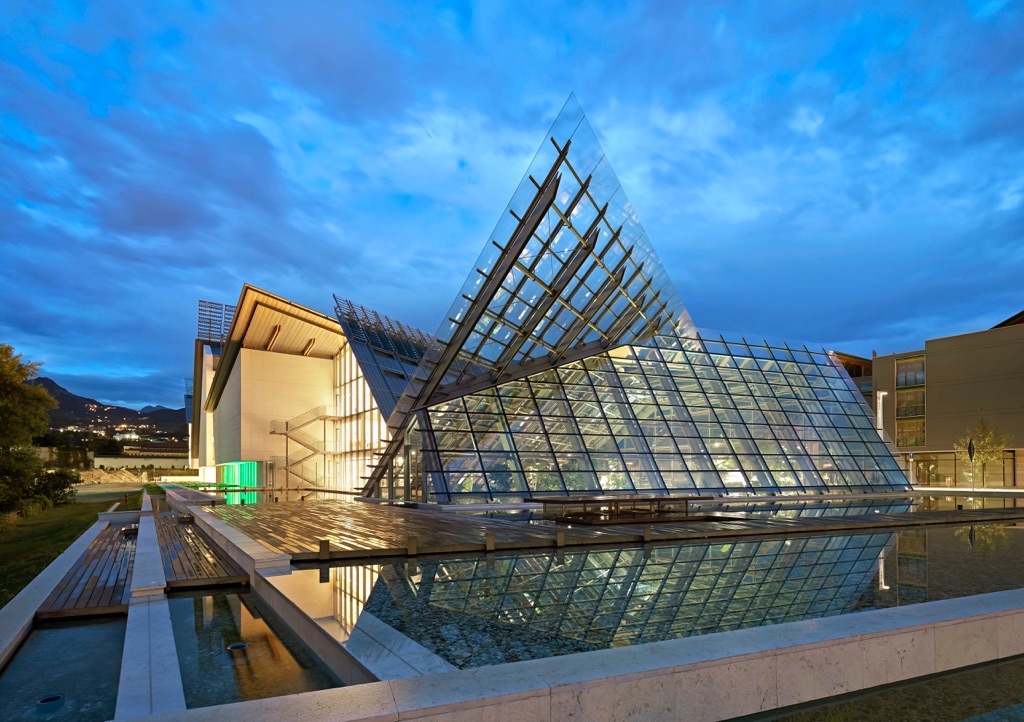The MUSE - Trento Science Museum is the city's science museum, dedicated to nature, sustainability and technology. It is located in the Le Albere district, a residential and commercial area designed by architect Renzo Piano, who also designed the museum. The Muse was opened on 27 July 2013 and replaced the former Tridentine Museum of Natural Sciences, founded in 1922.
It won the epithet Best Science Museum for families with children in Italy. Incredibly fascinating for adults and children alike, it is a must-see destination for anyone staying in Trentino.

The Muse is not only a museum, but also a centre for research and scientific dissemination, which organises events, conferences, workshops, guided tours and educational activities for all audiences. The Muse also collaborates with other local branches, such as the Centre for Ecological Monitoring and Environmental Education of the Udzungwa Mountains in Tanzania, the Geological Museum of the Dolomites in Predazzo, the Lake Ledro Pile-Dwelling Museum and the Alpine Botanical Garden on Monte Bondone. The Muse is also committed to gender equality, having adopted a Gender Equality Plan in 2023.
The external architectural structure is very reminiscent of the geological geometries of the Dolomites, a UNESCO World Heritage Site; steel and crystal sails and vedettas reaching towards the sky, recalling the spires and peaks of these marvellous rock formations.

As from the outside, the suggestion as soon as you enter the Muse is no less impressive and carries great expectations. It is spread over six floors, each of which offers an interactive and engaging exhibition itinerary, based on the scientific method and the tale of the Trentino region. The ground floor houses the lobby, ticket office, bookshop, bar and restaurant, as well as a space dedicated to temporary exhibitions. The first floor is dedicated to biodiversity, with a reconstruction of different natural environments, from rainforest to savannah, from desert to mountain. The second floor is dedicated to geology, with a section devoted to the Dolomites and a section devoted to digital geology, which allows visitors to explore the underground with an interactive station. The third floor is dedicated to prehistory, with a section devoted to dinosaurs and a section dedicated to prehistoric man, with archaeological finds and reconstructions of scenes of everyday life. The fourth floor is dedicated to history, with a section dedicated to the history of Trentino and a section dedicated to the history of science, with scientific instruments and testimonies of Trentino scientists. The fifth floor is dedicated to the future, with a section devoted to sustainability and a section devoted to technology, with experiments and simulations on the challenges of tomorrow. The sixth floor is dedicated to the Star Terrace, an astronomical observatory equipped with a telescope and an opening dome, which offers a panoramic view of the city and the mountains.
The suggestion is to start the visit from the highest and most panoramic point of the museum, i.e. from the top terrace where the view can sweep over the entire historic centre of Trento and reach the peaks surrounding the city. From there, a tour begins, taking in the glaciers of the highest peaks of the Alps and then slowly descending, discovering new and interesting things behind each panel, inside the various aquariums and terrariums, and interacting with dynamic games up to the first floor, where the main attraction is the world of prehistory. One really fascinating thing are the life-size figures of primitive men made of wax, the verisimilitude is incredible. But this is just a taste, because the MUSE is much, much more...
The Muse in Trento is a museum that offers a unique and stimulating experience, inviting visitors to discover the world through science, to reflect on environmental and social issues, to experiment and to have fun. A museum for everyone, which wants to contribute to the dissemination of scientific culture and to the enhancement of the Trentino region.

How to get there and info
Opening hours:
Tuesday - Friday 10-18
Saturdays, Sundays and public holidays 10-19
Mondays: closed
BY CAR: If you take the Brennero motorway, you can exit at Trento Sud and continue north along the ring road. Take exit number 4 and enter via Sanseverino.
PARKING: paid underground parking (2€ per hour), as long as it does not exceed 2 metres in height. Parking spaces can also be found along the access road.
Families:👶👶
Ideal season:🌸☀️🍂



